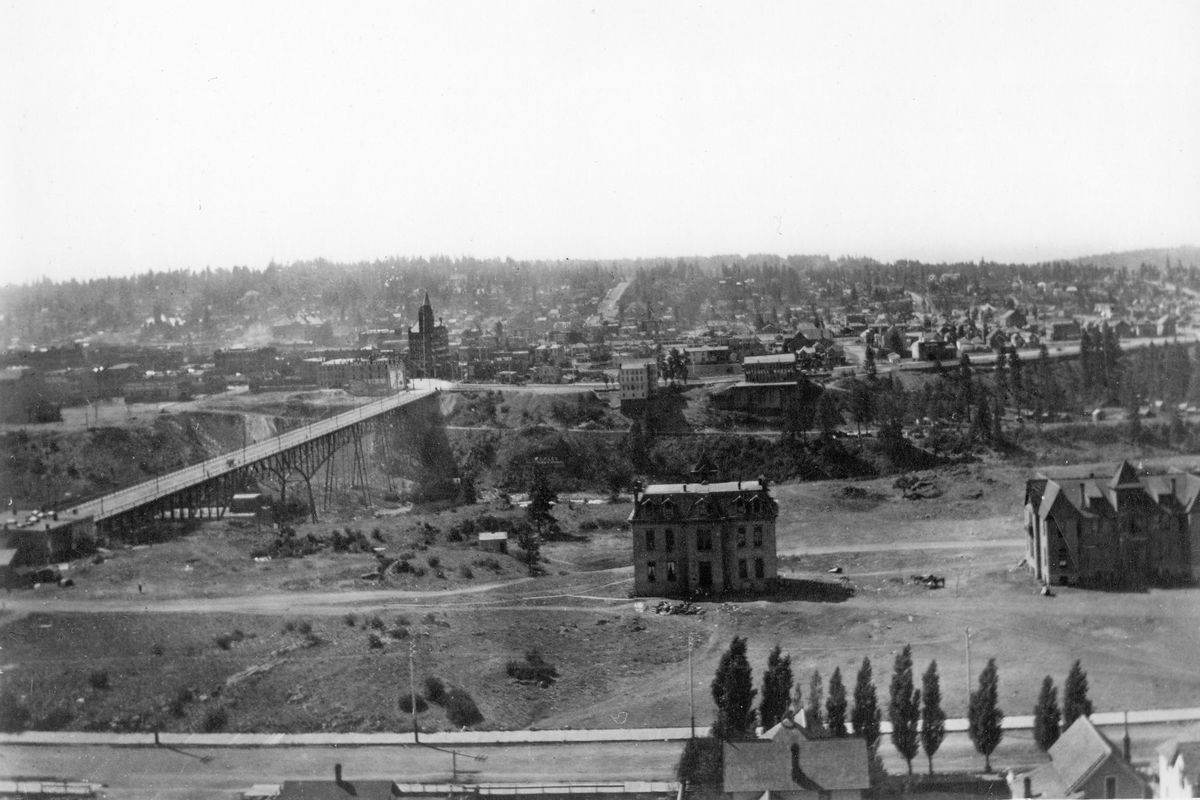Then and Now: Spokane College

The Methodist Episcopal Church, one of the largest Methodist denominations, made Spokane’s first attempt at higher education. The Spokane First Methodist Church brought a new minister, the Rev. I. C. Libby, to town in 1881. Both Libby and his wife had college degrees and immediately helped organize Spokane College, which opened in a downtown building in 1882. The new school would take students from primary grades through college.
David P. Jenkins, an Illinois lawyer who had homesteaded and claimed a large tract of land on the north river bank, offered them free land for a campus. He believed in the value of education. Jenkins High School in Chewelah is named for him.
Jenkins had two conditions: One, if the college wasn’t maintained well, the land would revert to him; and two, the college had to remain nonsectarian. Once Libby and the college’s board agreed, Jenkins financed the new building, a two-story frame structure with a central tower easily seen from downtown. Classes finally opened in the first building in early 1884. A second building was built as a dormitory.
For a 12-week term, tuition was $7.20 for primary school, $9 for preparatory and $15 for college classes.
Gonzaga College opened across town in 1887. Spokane High School, the first built with tax dollars, was completed in 1891. The demand for education was changing.
The school was still growing and had 200 enrolled in 1890. With high hopes, the name was changed to the University of Spokane, and it claimed to have a medical school and a law school, which existed only paper. The school was heavily in debt and enrollment began to fall.
Jenkins took the land back and organized Jenkins University in 1891. It only lasted a year and debts were piling up. Lawsuits over the debts lasted for years.
The buildings were used as an elementary school for a few years, then abandoned in 1904. The buildings, then surrounded by railroad tracks to the north and south, were torn down around 1910. Historian Chuck Plumb wrote, in 1963, that though it failed, the college “put the city on the map for being an educational center.”